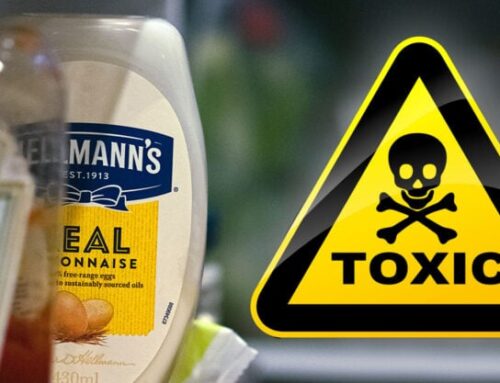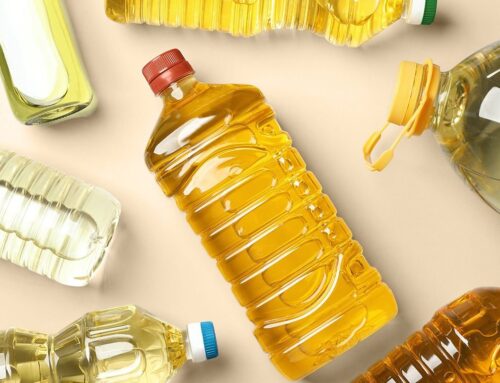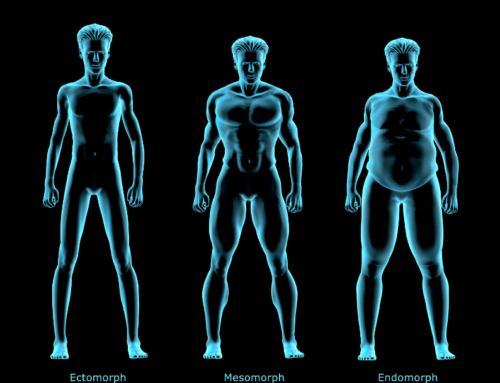Here we talk about the primary reason so many people fail during fat loss diets. In order for us to be successful in our diets, we must be fully prepared with the right knowledge and have an idea of what to expect.
How do I know I’m losing fat?
Fat loss is a tricky topic for most people because they often struggle to know if they are making any progress.
The reality is, when fat loss is occurring, it is a relatively unpleasant process. What is required for fat loss is multiple days of a sustained caloric deficit. The body must be directed to access its own stored energy (body fat) rather than relying on food.
Most people have never undergone several days in a row in a calorie deficit, and when they realize the effort it takes, they often jump ship.
Therefore, the best way to know if you’re losing fat, is if you feel bad. This is a harsh reality for most people and the most significant reason most do not stick to a fat loss program – quite frankly – it sucks.
But don’t get discouraged. As time goes on, you learn what to expect, and the suffering reduces down to a very manageable level.
When you embark on your first sustained caloric deficit, you will probably also experience increased anxiety levels – especially when consuming caffeine in a fasted state, reduced energy levels and at times, a negative or irritable mood.
What is happening in the body during a sustained caloric deficit?
The body is an amazing machine. It has undergone hundreds of thousands of years of refinement, being put through the most demanding tests nature can throw at it. This means the body has a lot of built-in intelligence most of us never knew it possessed.
Modern living has created an environment where many of the bodily functions we once depended on are no longer being used.
The bodily processes we will focus on here are Anabolism and Catabolism, two categories of biochemical reactions that make up our metabolism.
The Anabolic process, also known as biosynthesis, occurs when the body uses nutrients to create relatively complex living cells. Essentially, the body is creating larger molecules from smaller ones.
The anabolic process is what the body uses to generate the cells that make up everything from our muscle tissue and bone to hair and skin cells. The body combines energy and nutrients to repair and grow essential structures throughout the body.
The catabolic process, on the other hand, is essentially the reverse of the anabolic process. It involves breaking down more complex structures into smaller ones.
This process is just as crucial as the anabolic process, as it enables the breakdown of nutrients, including stored body fat, to use throughout the body.
To lose fat, the body must be in a catabolic or fat-burning state.
The body uses hormones to “flip the switch” between these two states, and this is what makes fat loss so tricky. We must do certain things to enter a catabolic state—things that are not often discussed or implemented by the wider fitness community.
The downside of the catabolic state, as mentioned above, is that it usually feels unpleasant. The hormones released during this state increase anxiety and generally make us feel uneasy and irritable.
Catabolism functions: the Pancreas, Liver, Blood Sugar and HGH
The catabolic process begins when the amount of blood sugar in the body drops below a certain threshold for a certain amount of time. This leads the body to believe that food is in short supply and better begin to implement a strategy if it wants to survive.
The body’s survival strategy involves releasing a hormone called glucagon from the pancreas. Glucagon works by raising the amount of glucose and fatty acids in the blood by signaling the liver to engage in glycogenolysis—a process where the liver converts stored glycogen (complex sugar) into glucose (simple sugar), which the body, and especially the brain, can use as an immediate energy source.
Glucagon also encourages the breakdown of fat and muscle tissue all over the body. If the catabolic process continues long enough, the body will essentially switch over to burning pure body fat as its only energy source in a state known as ketosis.
Because glucagon is a catabolic hormone that encourages the body to breakdown tissues, including muscle, the body uses a unique defensive weapon to prevent the breakdown of essential tissues called human growth hormone, or HGH.
HGH is anabolic and stimulates growth, cell reproduction and regeneration of all kinds.
How long does fat loss take?
The biggest reason why people cannot stick to a fat loss diet is that they assume the bad feelings they associate with a caloric deficit are not natural or normal.
After a caloric deficit is put in place—when things start becoming unpleasant—is when the actual fat loss is occurring! When people learn that they must keep themselves in this catabolic state for many weeks at a time, with only small breaks, they become discouraged and give up.
The unfortunate thing is that the most challenging time during fat loss is the first few days! Once you make it through this initial period, you learn that being in a fasted or catabolic state is not that bad. In fact, many people learn to enjoy it and report that it makes them feel more alive due to the increase in cortisol, or stress hormone.
Most people can expect to lose 1 to 2 pounds of pure fat per week while in a caloric deficit.
During the first week or two, the bathroom scale can fluctuate widely, but that is more often due to water weight loss. When your overall blood sugar level drops for an extended time, your body no longer requires the usual amount of water to process the glucose and thus signals the kidneys to remove it.
The best advice I can give to those frustrated with the slow rate of fat loss is learning to enjoy the feeling of being in a fasted state or the feeling of being hungry.
It sounds crazy, but there is a certain spiritual element to it. When you realize that you’re trading a small amount of discomfort to change your body composition, improve your health and appearance, it can become a fascinating process to engage in.
Complications of a sustained caloric deficit
I should mention here that learning to control your body in this way can become addicting.
This is where some people begin to tread down the path of anorexia or other eating disorders. It is essential always to consult your doctor and keep them in the loop regarding your dieting methods and the amount of weight you are losing. They can let you know if you are going too far with it, even if it doesn’t seem so to you.
The roller coaster of fat loss: why do we plateau?
You’re learning tips and tricks to manipulate your body and bend it to your will—but let’s not get ahead of ourselves.
Human evolution has been around a lot longer than dieting strategies and beach bodies.
Humans were forced to go weeks without eating throughout our history of evolution and somehow managed to survive. This isn’t without the body implementing drastic measures to keep us alive.
The greatest tool our body uses to keep us alive is limiting the amount of energy we decide to use; that’s right, our bodies have a way of convincing us to use less energy, and they do this by fluctuating our hormones.
These hormones change the way we feel and have a massive effect on our motivation, especially when it comes to physical activity.
Most people don’t realize that when in a sustained calorie deficit, they begin to perform less activity.
Most people would argue that they have kept the same gym routine and changed nothing, but in reality, the intensity of their exercise has probably diminished slightly, resulting in fewer calories burned each day.
This is why after calculating your calories necessary to induce fat loss, after a couple of weeks, fat loss stops, even though you’re still suffering through a caloric deficit.
Your body has succeeded in convincing you to use less energy, and you didn’t realize it!
Refeed days
For this reason, we often implement re-feed periods of increased caloric intake to help convince the body that there is nothing to worry about.
An example of this could be five days of a 500-calorie deficit followed by one day of a 500-calorie surplus and back to 5 days of a 500-calorie deficit. If this strategy is implemented correctly, one could expect to have a relatively linear fat loss rate throughout their fat cutting program.
The worst-case scenario happens when people cut their calories very low for an extended amount of time, sometimes even six months to a year, without seeing much of a result!
This is a lot of needless suffering and why it is always a good idea to enlist the help of a professional who has gone through the fat loss journey themselves and knows how to avoid the common pitfalls.
Endoshredz Cutting Program
The Endoshredz cutting program walks through the entire fat loss process designed specifically for endomorphs, laying out a succinct and straightforward path to make real progress.
I walk you through how to calculate your calories and include many endomorph-specific tips and tricks to make things easier on yourself.
Then, we walk through the core compound lifts which allow you to pack on muscle and strength all while continually cutting fat.







Great content! Keep up the good work!
Thank you!
All on point 💯. Love it. I would like to add however that you can speed up the fat loss process depending on what your body will allow. I personally can lose up to a pound a day and remain healthy through the intake of fatty meat before 10:00 a.m. along with continuous light to moderate exercise while adding fruit with natural sugars in between the hours of 10:00 and 5:00. It gets pretty intense.
I’m glad to see more articles talking about endocrine and hgh function and the correlation between fat loss. This is all gospel for sure
Thanks a lot Johnathan! I agree. They say 1 pound of fat is roughly equal 3500 calories, so if you can create that deficit in 1 day, you can lose a pound a day. It goes without saying though that this will be extremely hard to maintain for more than a few days! I also agree with the fatty meat in the AM. It helps A TON with satiating your hunger and allows you to push out into the afternoon with lower calories. Adding some fruit sugar in the afternoon then feels amazing. It is like pure nectar at that point! All the best in your diet and fitness journey my man! Thank you for the comment!
Woah! I’m really enjoying the template/theme of
this blog. It’s simple, yet effective. A lot of times
it’s challenging to get that “perfect balance” between usability and visual
appearance. I must say you have done a superb job with this.
Also, the blog loads very quick for me on Chrome.
Outstanding Blog!
Thank you very much! I’m no professional but learning as I go! Cheers!
Thank you so much!
Thank you for reading!